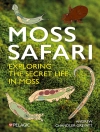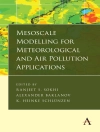This book introduces the current approaches in prokaryotic taxonomy and streamlines the advanced techniques for use in prokaryotic systematics. While highlighting the key differences in the taxonomy of cultured and not-yet-cultured bacteria and archaea, it presents the genomic technology involved in microbial systematics that serves as comprehensive guidelines for isolating and identifying bacteria. Microbial systematics is a fundamentally important discipline area for microbiologists and those seeking to understand Earth’s biodiversity. As bacterial taxonomy is critical in microbial ecology and clinical microbiology works, the correct identification of microbes is crucial. However, the microbial collection existing and described as cultured species so far are either based on the taxonomic pattern that existed during its time of first cultivation. With evolving technology, many microbes were found to be wrongly classified. Therefore, it is essential to keep in contact withthe developing technology and methods for the correct placement of cultured bacteria and their identification. This book is an excellent guideline for adequately identifying, classifying, and describing novel taxa of bacteria and archaea.
Jadual kandungan
Chapter 1. Limitations of the historic taxonomic approach and minimal taxonomic standard.- Chapter 2. Naming of New Taxon.- Chapter 3. Technology Promoting Genomic-based Taxonomy.- Chapter 4. Phylogenomics and Phylogenetic Relationship.- Chapter 5. Overall Genome Relatedness Indices – Interpretation and Defining New Taxonomic Ranks.- Chapter 6. Genomes and Chemotaxonomy.- Chapter 7. Genome and Phenotypes.- Chapter 8. Taxonomic Approaches for Uncultivated Microbes.- Chapter 9. Description and Naming of Candidatus Species.- Chapter 10. Naming of the uncultivated Archaea and Bacteria.- Chapter 11. Applications of bioactive compounds derived from novel taxa.- Chapter 12. Challenges and Opportunities of Bacterial and Archaeal Taxonomy in Future.
Mengenai Pengarang
Prof. Wen-Jun Li, Sun Yat-sen University, Guangzhou, China
Dr. Jian-yu Jiao, Associate Research Fellow, Sun Yat-sen University, Guangzhou
Dr. Salam Nimaichand, Associate Research Fellow, Sun Yat-sen University, Guangzhou
Dr. Manik Prabhu Narsing Rao, Associate Research Fellow, Sun Yat-sen University, Guangzhou












